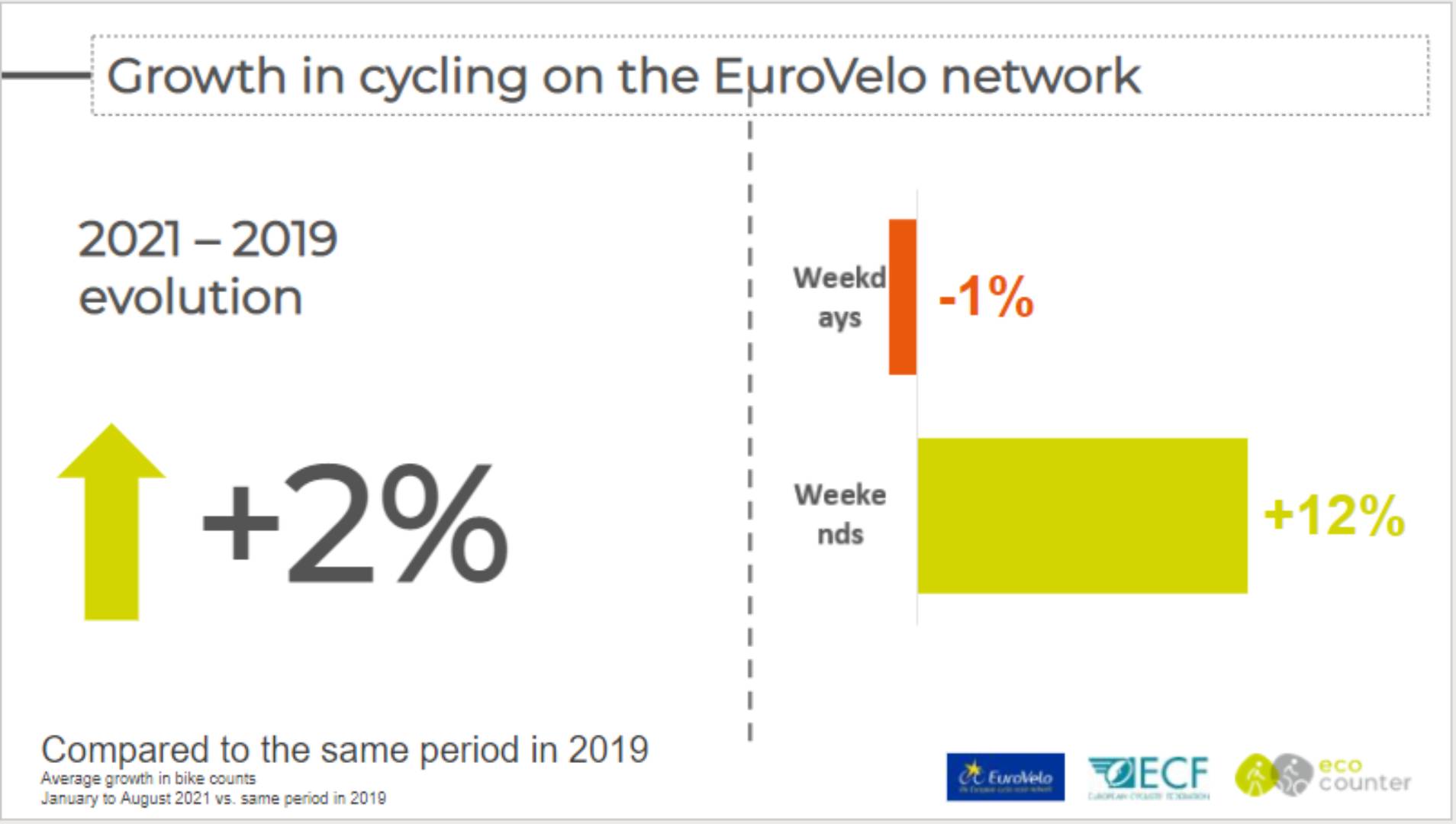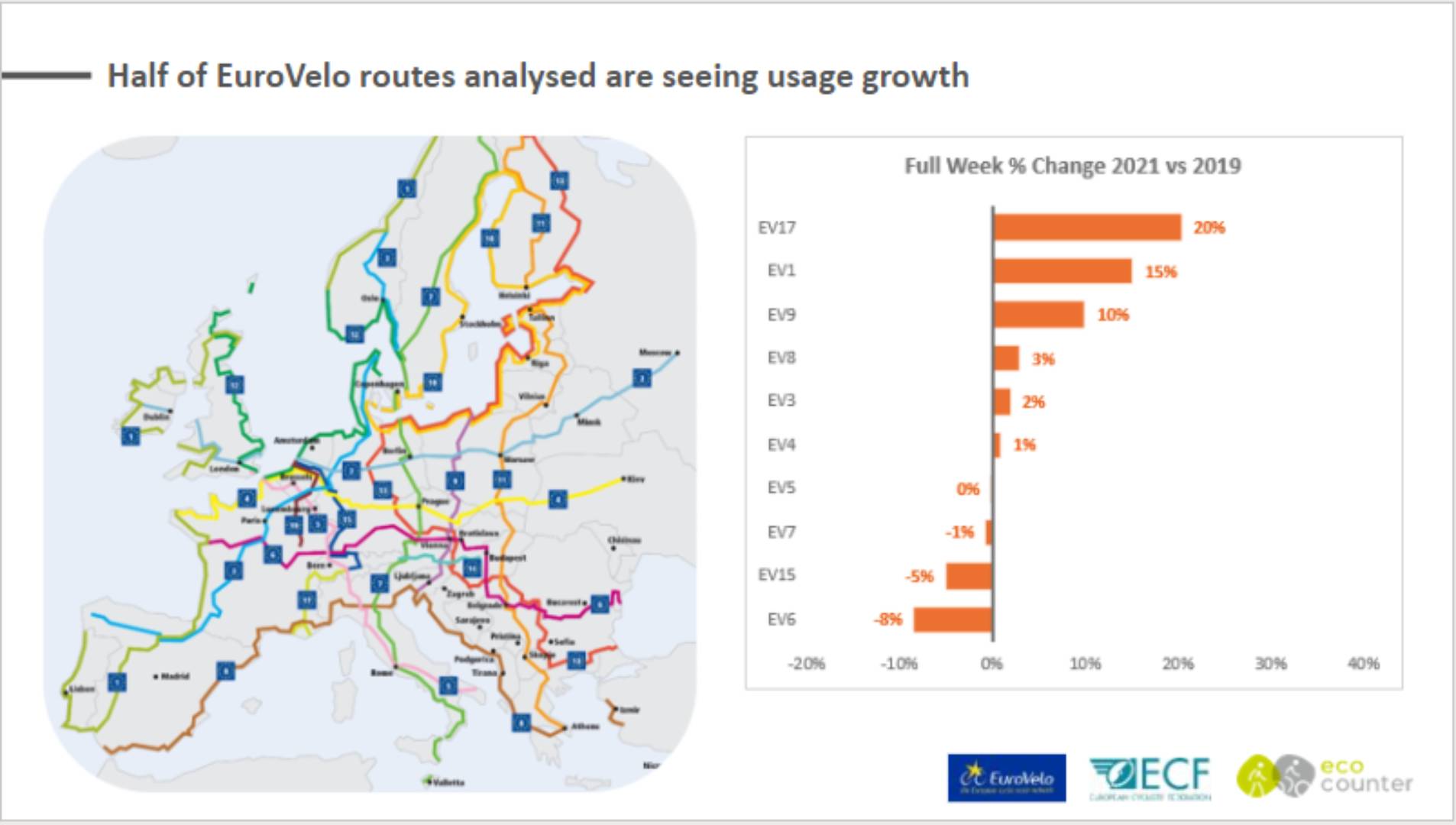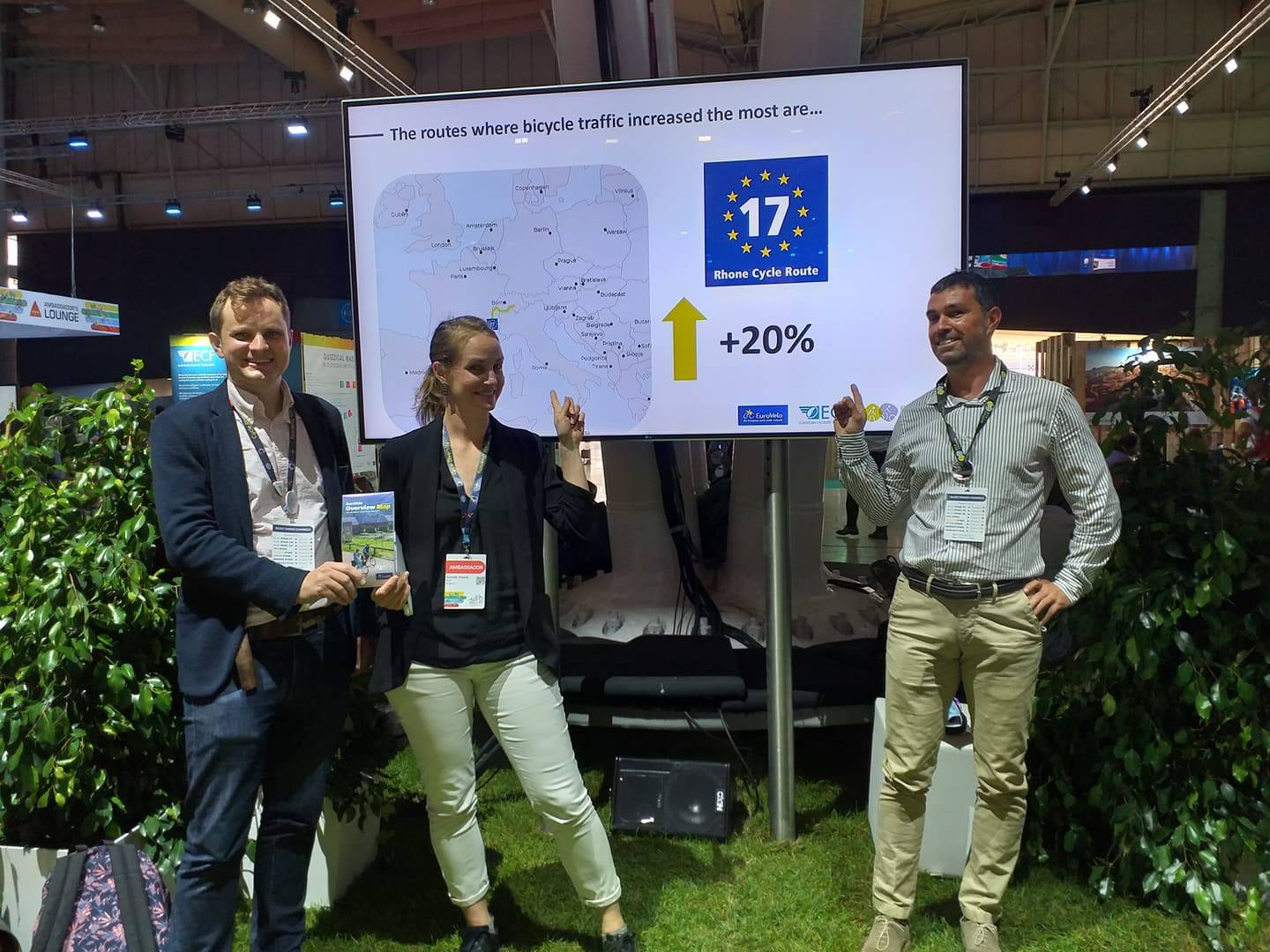Rhone Cycle Route tops the inaugural EuroVelo Barometer
This was the result of the first ever EuroVelo Barometer, which thanks to ECF’s ongoing collaboration with Eco-Counter, makes it possible to track the use of ten EuroVelo routes over the past two years. The Velo-city conference 2021 Lisboa was the ideal occasion to launch the barometer and to celebrate our first champion.
National level data collected across Europe over the past year has been indicating that more people are cycling then pre-pandemic. This trend can now also be seen at the European level. There are currently ten EuroVelo routes where we have enough counters to provide a representative measurement of the growth of cycle trips since 2019. Despite ongoing COVID restrictions being in place in many locations in Europe, there has been a growth of cycle traffic during the first eight months of 2021 (compared to the same period in 2019).
Through the barometer and its representative sample of counters, we observed a general growth of 2% on the EuroVelo Network, including a 12% increase at weekends suggesting that much of this growth can be connected to tourism and leisure use.


And the winner is..
Of the ten EuroVelo routes analysed, three saw a significant increase in use. Ed Lancaster, ECF’s EuroVelo Director, announced that EuroVelo 9 – Baltic-Adriatic ranks third among the evaluated routes with an increase of 10% compared with the same period in 2019. In second place comes the longest EuroVelo route: EuroVelo 1 - Atlantic Coast Route, which has seen a growth of 15% between the first eight months of 2019 and 2021. The route with the biggest cycle traffic increase between 2019 and 2021 though is EuroVelo 17 - Rhone Cycle Route, with a 20% boost in the number of users. These results were welcomed by Camille Thomé, Director of Vélo & Territoires (the French National EuroVelo Coordination Centre), who was present in Lisbon for the announcement.

This substantial increase in cycle traffic can partly be attributed to the significant investments made on the French section of EuroVelo 17 in recent years with at least 12 EU projects connected to the cycle route during the previous EU financial period (2014-2020) with a total investment of €12 million.
Fun trends
Enrico Durbano, CEO of Eco-Counter, highlighted some curious patterns amongst the data. For instance, EuroVelo 4 – Central Europe Route registered the least use of all routes before 10 am (less than 9% of trips) and was dubbed the ‘Late Riser Route’. EuroVelo 17, on the other hand, had a particularly high proportion of journeys before 9 a.m., at around 15.4%, which earned it the title of ‘Early riser route’. EuroVelo 17 really sweeps the board this time and takes another unusual title: the ‘Siesta Route’! It shares the podium for this honour with EuroVelo 5 - Via Romea (Francigena), which both show two strong slumps between noon and 2pm!

In general, the results along the EuroVelo routes were positive as cycle tourism traffic was higher or similar to 2019 despite COVID-19-related restrictions in place. The collection and analysis of data along the EuroVelo routes is an important tool to ensure better policy work, infrastructure and promotion and consequently better and #MoreCyclingTourism in the future. Eco-Counter will be digging into this data in more detail during the EuroVelo & Cycling Tourism Conference next month. We are also looking forward to presenting you the next edition of the EuroVelo Barometer during Velo-city Ljubljana 2022, so stay tuned!
For more data on the usage of the EuroVelo network, go to our EuroVelo Data Hub page.